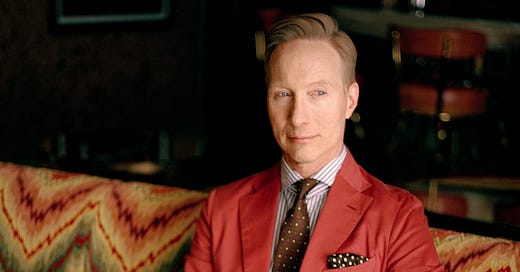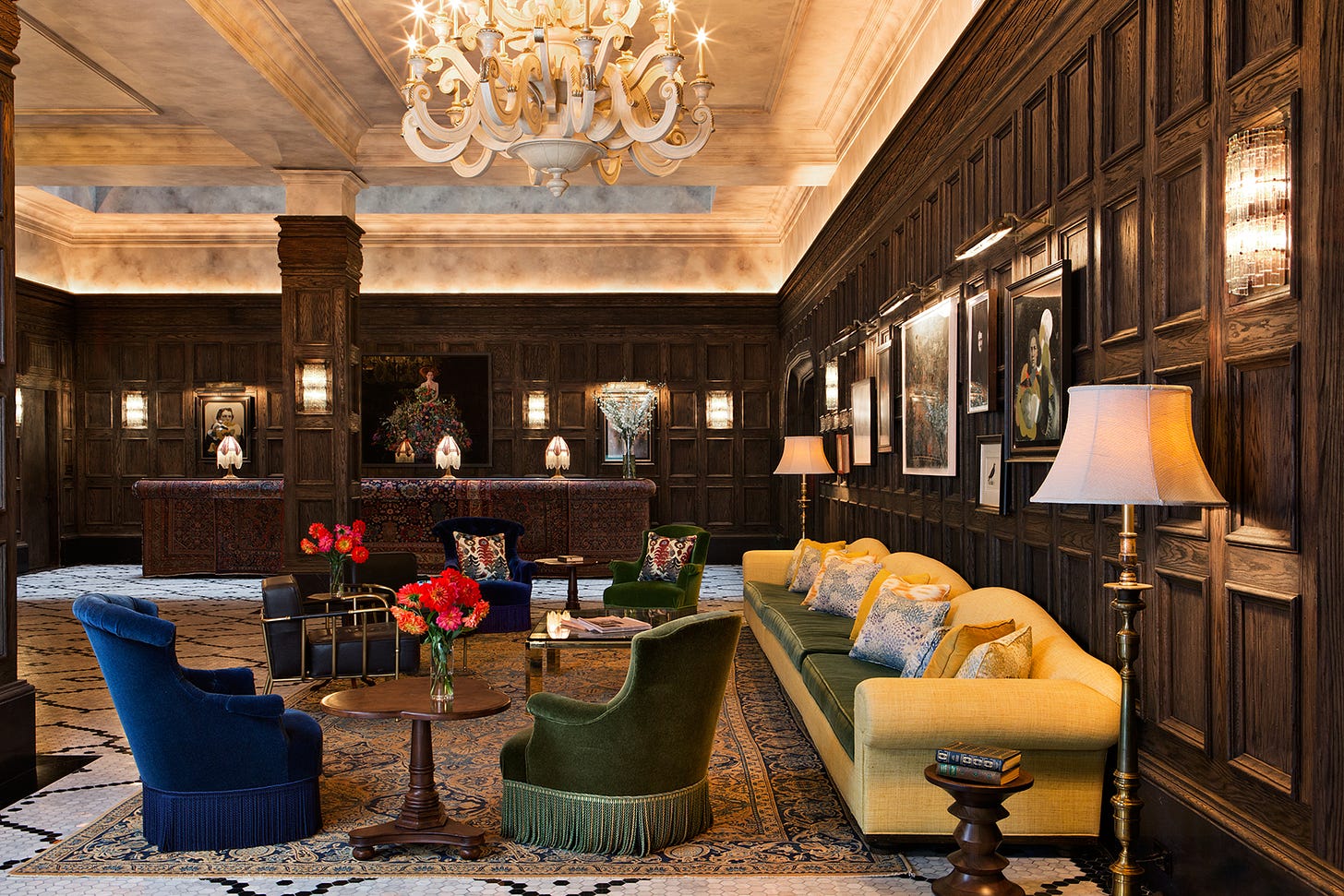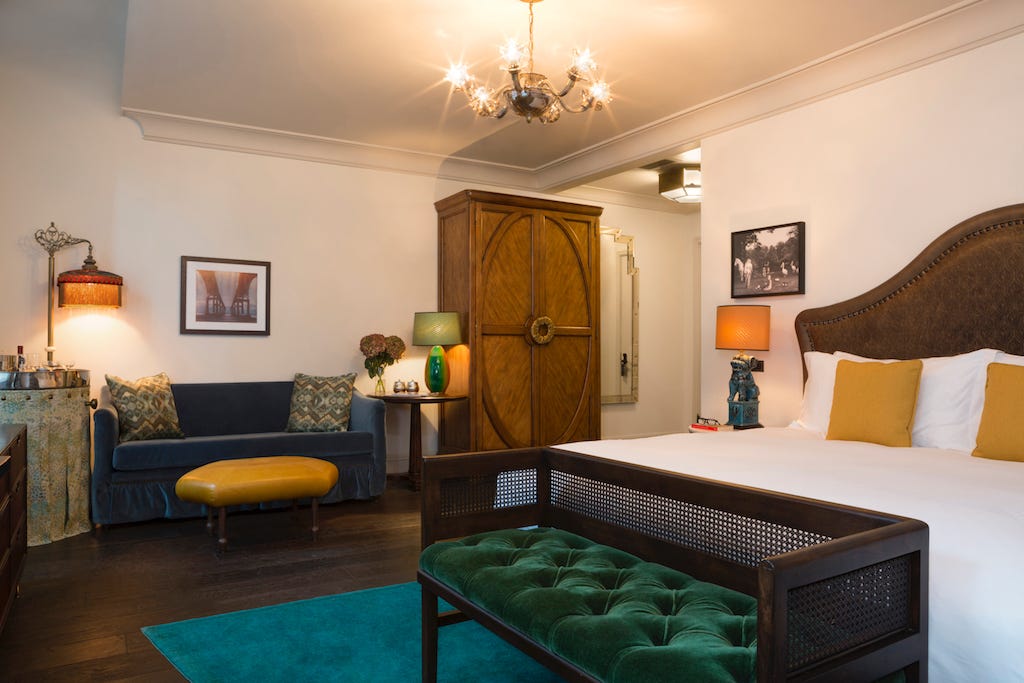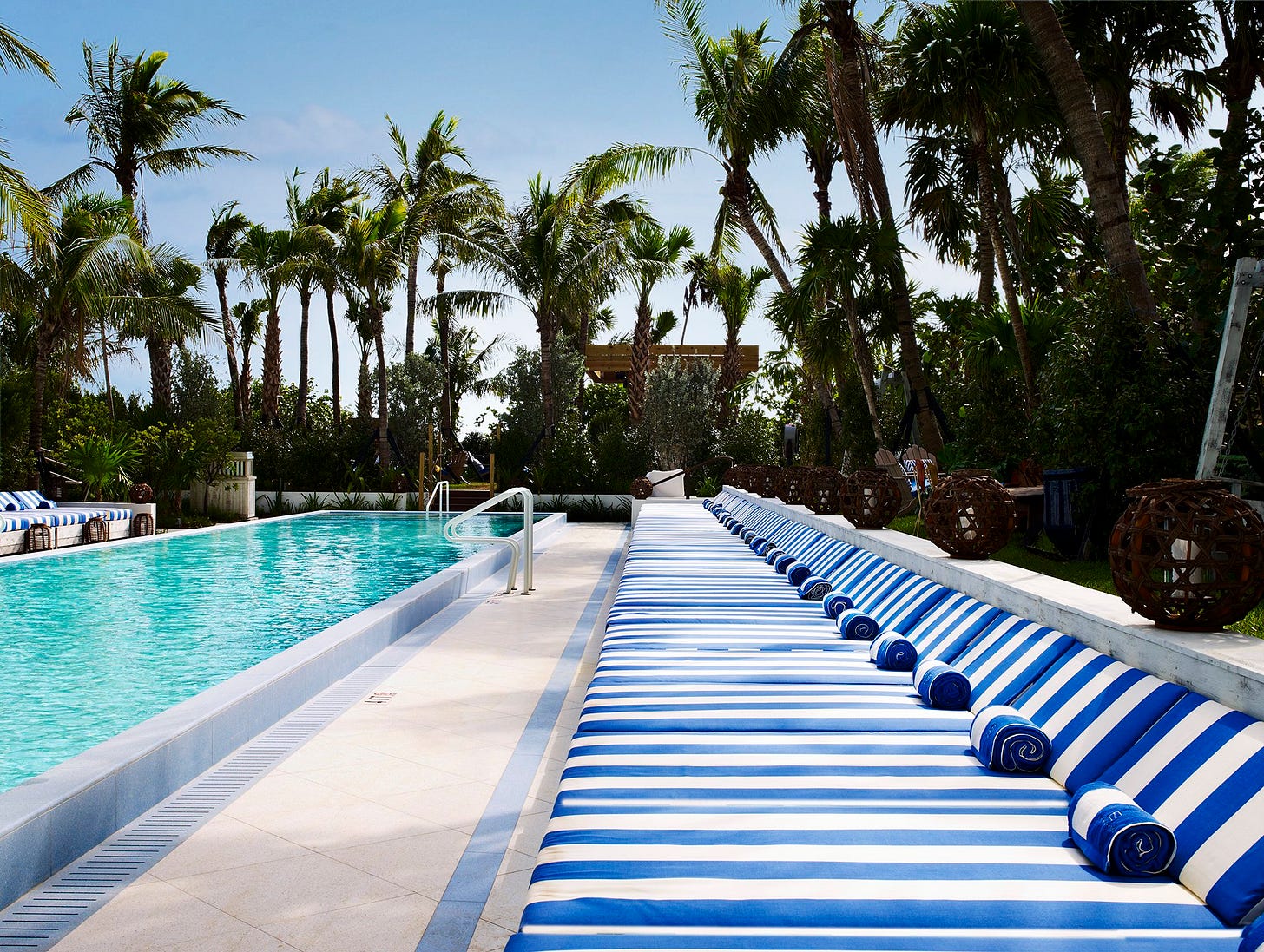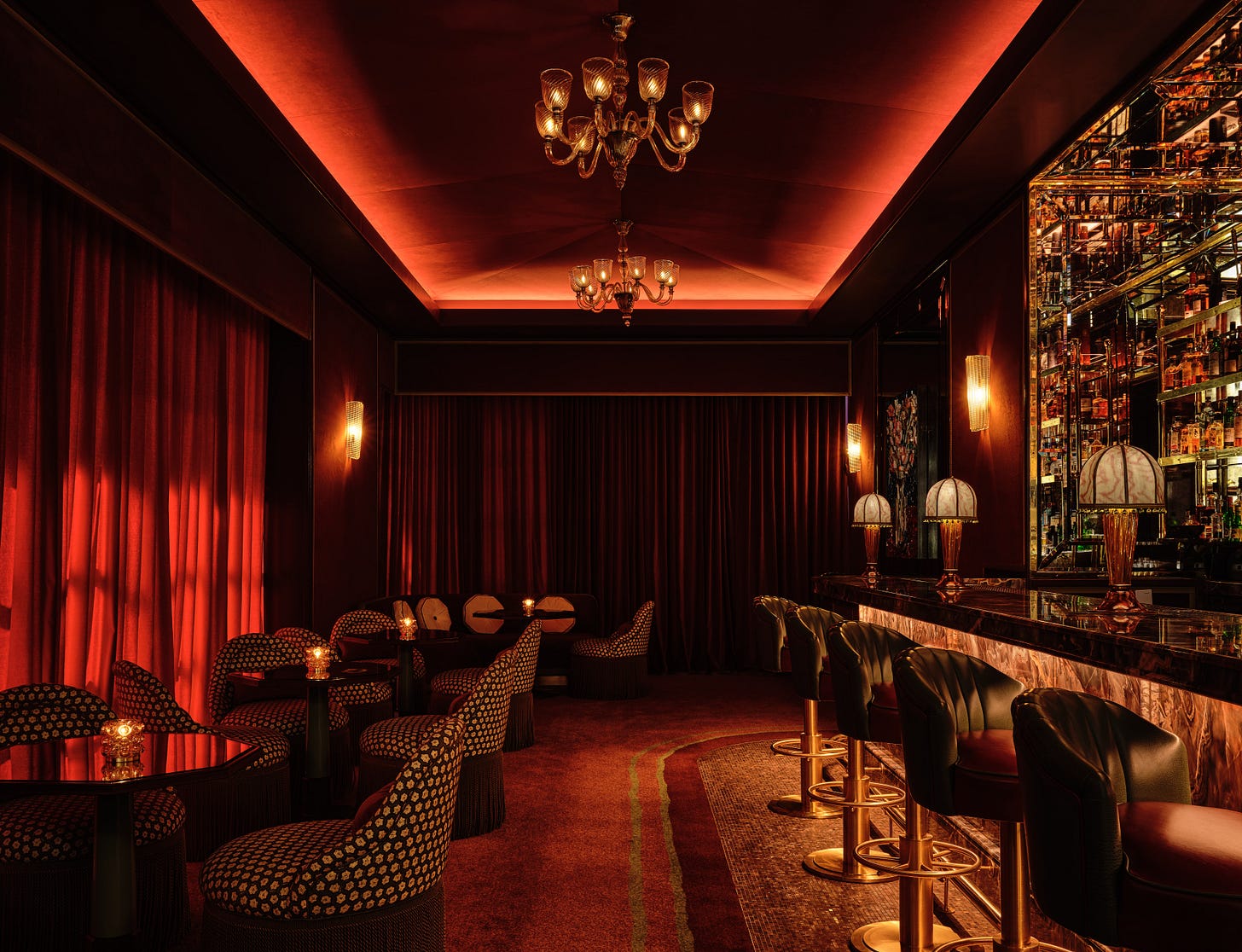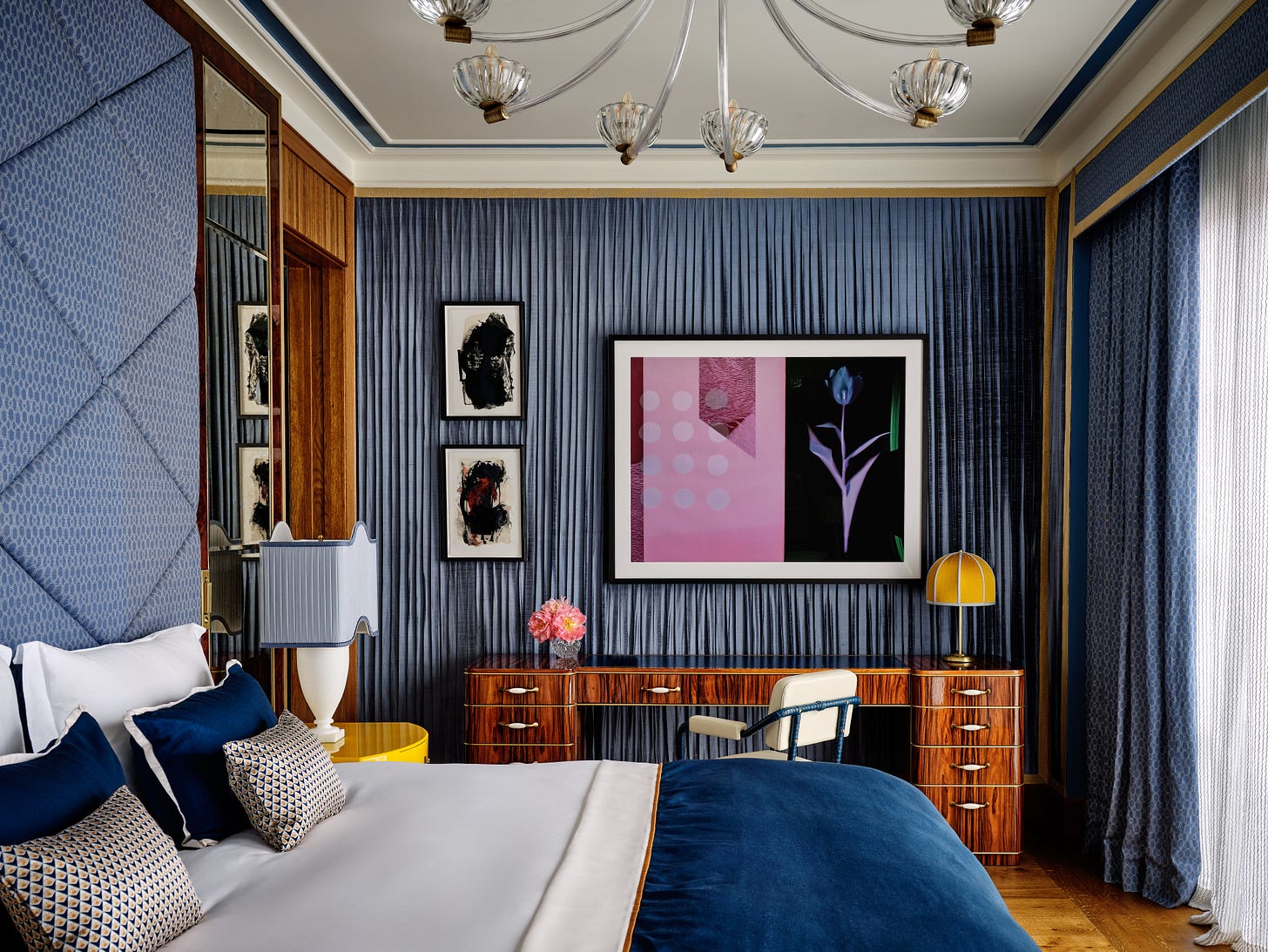Martin Brudnizki Is Still Telling A Story With Design, 25 Years In
The MBDS founder speaks on design process and inspiration on A HOTEL PODCAST
(MBDS Founder Martin Brudnizki. Photo credit Oli Kearon.)
Perfect For: Hospitality operators seeking experienced and innovative design
Looking back to the beginnings of Martin Brudnizki Design Studio in 2000, agency founder Martin Brudnizki pinpoints one major change in how the hospitality design firm operated then versus now.
“I think in the beginning of my studio and the work that we did…it was all about me,” Brudnizki shares with A HOTEL PODCAST. “It was, I came up with the ideas, I put together exactly what it would be, and I sort of like directed the team that I had. Which was of course, much, much smaller, to exactly what we were doing. And then with time, that changed, that the team would come up with ideas and basically, they sort of would…come to the table with a stack of printed photo, copies of chairs and tables and materials, and they were laid out to me. I would then look at it, and I would sort of put it together, like this is the design, and then eventually we sort of graduated to that the team will put together schemes so that I would then review and tweak, and that's sort of where we are today.”
“I always was interested in sort of the creative side, like sketching. Doing things without really knowing what I could sort of do with this sort of talent.” - Martin Brudnizki
Overseeing over a hundred staff members between the agency’s New York and London studios, Brudnizki describes his role at MBDS as “ensuring that what we do is at the best that it can be.” That includes developing the firm’s production process, working off a document the founder wrote over a decade ago that examines “exactly what a design concept is and how we look at it and who does what,” and asking questions like “How do I see the work? What does the work mean?”
“Whether we do a hospitality project or someone's sort of private home, the whole thing is we create an experience…of what encompasses the result,” Brudnizki explains of his and the MBDS team’s process. “And how do we then do that? We do that through actually studying, first of all, the site and the building that we have. Whether it's a historical building or it's a new build, we are looking at the street and the neighborhood, and then we look at the town or the city and then the country. And as we study all of these elements, we'll find stories and those stories become part of the design narrative that we sort of create. And this narrative will (be) distilled into the vision, and that is the vision that will guide us as we start looking at what the design concept is.
“It's very much about words. The beginning is about words. It's not about materials or finishes or design reference points from the past. It's all about emotive and emotive narrative. And the client is sort of part of that process because…us talking to them, interviewing them, they're telling us what they want. So that sort of gets baked into this narrative as well.”
(The Beekman Hotel. Photo credit James McDonald.)
Across a portfolio that includes bars, restaurants, members clubs, and retail brands, MBDS’ hotel roster features premium luxury and lifestyle clients like Park MGM, Pendry, West Hollywood, The Fifth Avenue Hotel, and many more impressive properties. The firm’s site describes their approach to hotel design as knowing “how to create an interior that harnesses the character of the building, the history of the location and the traditions of the neighbourhood.” The history of the former Temple Court Building, now an interior landmark in Manhattan’s Financial District, certainly informed MBDS’ work on the building’s present day identity as The Beekman Hotel.
(The Studio Suite at The Beekman Hotel. Photo credit James McDonald.)
“It was a beautiful building, but sometimes these buildings that (have) been around for a while, you walk into it and it was in quite a dilapidated state, and that was the beauty of it,” Brudnizki recalls. “I walked into it and the buildings had just told me what it wanted to be, 'cause it was that sort of a…it’s almost like I wanted it to feel like we just moved furniture into it and it felt a little bit, sort of, the age was there. I didn't want to create something that was new or contemporary. I wanted something that felt a part of this building that was almost like a timeline over the years. You know, like sort of (the) sofa broke and they bought a new sofa in the 1920s and then a dining chair, a couple of dining chair broke and they bought them in the 1960s. So it was almost like the idea of the design, the furniture, the fabrics was all like a timeline, and the style sort of changed. And that's what sort of the approach, I sort of like that sort of idea. I don't like when it's like, ‘Oh, here's the style and we're gonna do it all in this style.’ And it has not really anything to do with anything, either the building or the neighborhood, et cetera. It's very important for me that it's sort of part of the story. And the story here was about the Beekman.”
MBDS’ work can also be found 1,300 miles down the East Coast, at the Cuban and Art Deco-inspired Soho Beach House Miami, where Brudnizki and team brought “a more Colonial style” to the beachside hotel and members club.
(The pool at Soho Beach House Miami. Photo credit James McDonald.)
”Cuba is very close. And that's the idea of this, the Colonial sense that can sort of be sort of very English in its essence, as well. Because at the end of the day, Soho House is a British brand. So we sort of wanted to marry these two as sort of, place them sort of in this building. And we thought the Cuban idea of sort of concrete floor patterns, et cetera, and all of these things sort of made sort of sense. And it was a very successful sort of project and it sort of worked extremely well.”
(Soho Beach House Miami. Photo credit James McDonald.)
Another blending of cultures and styles can be found in MBDS’ treatment at the Parisian-influenced Fouquet's New York in Tribeca, as Brudnizki describes.
(Titsou Bar at Fouquet's New York. Photo credit Read McKendree.)
“This was a very interesting approach because the Lucien Barrière brand is based in Paris on the Champs-Élysées, they have a very grand hotel there and, designed in part or fully by Jacques Garcia. So you can imagine it's sort of very classical. Very, very, very classical, golden age sort of style. So here we are in New York and it's a new building designed in the style of a warehouse, you know, on Greenwich Street. So it's a completely different proposition. So how do we take that idea of Paris into this building that is much more industrial?
“So we sort of started with a bedroom and I thought, I'm gonna take inspiration and sort of really look at the sort of French Art Deco period from the sort of ‘20s and ‘30s. And we looked at designer(s) called (Paul) Dupré-Lafon and Jean-Michel Frank who are both very famous and we sort of used that as a starting point for the furniture. And then we used elements, that typical sort of Barrière detailing, which is this sort of diamond shaped sort of headboard. So we sort of did that, but in our style and we sort of did the room, so they had this sort of strong sense of modernity. But Art Deco at the same time. Of course the room is…you almost see the room(s) are like a microcosm of the hotel. And it could be a slightly different world. But then going into the public spaces, we started working with like simple timber paneling and timber floors. The materiality became more connected with the idea of what the building is.”
(The Fouquet's Penthouse. Photo credit Read McKendree.)
For more from Brudnizki, including MBDS’ perspective on new technology like AI, information about his forthcoming book, My Life in Colors: By Martin Brudnizki, and more, check out his interview on A HOTEL PODCAST below.
Find more via MBDS. And subscribe for more from A HOTEL PODCAST on LinkedIn, Apple Podcasts, Spotify, YouTube, TikTok, and Instagram. Words by Jaime Black.

